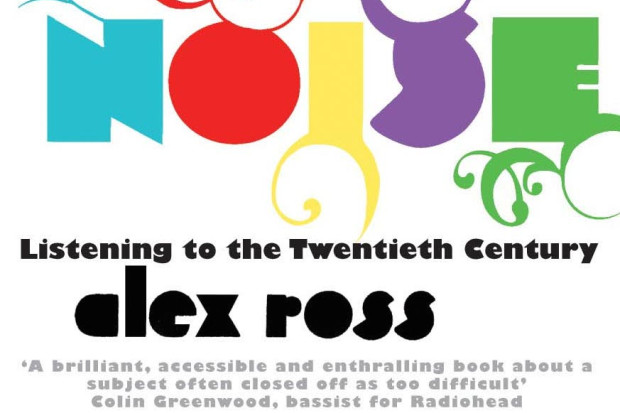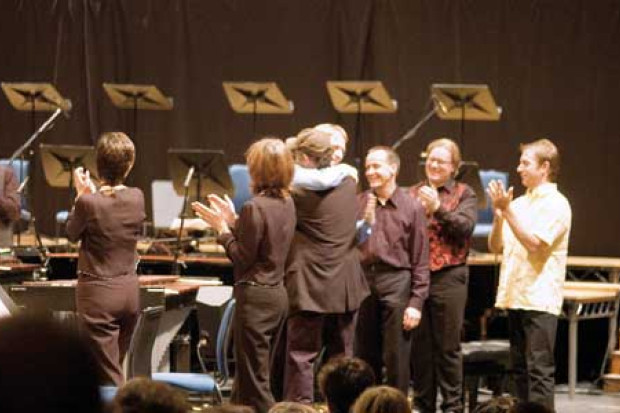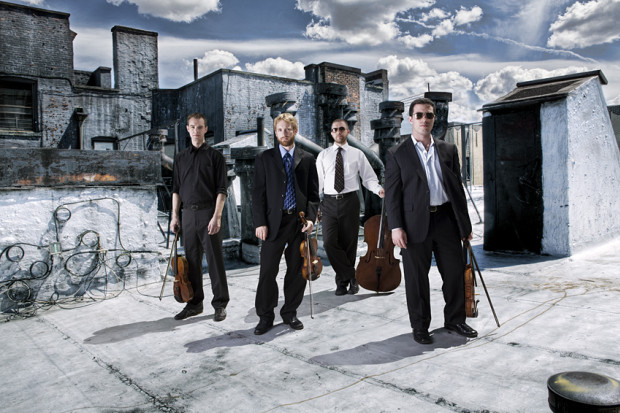Live Reviews: RTÉ Living Music Festival: 26th October late concert
RTÉ Living Music Festival, 26th October The Theatre, The Helix
Crash Ensemble
Cond. Fergus Sheil
Berio — Sequenza III (voice) (1966)
Andriessen — Dubbelspoor (1994)
Berio — Thema (Omaggio a Joyce) (1958)
McKay — Ice Etchings (2002)
Berio — Sequenze I (flute) (1958)
Dennehy — To Herbert Brün
(final movement) (2001)
The Saturday night concert in the Theatre of the Helix was very well attended, given the 11pm start time and the unfamiliarity of the venue. Crash Ensemble presented six works, three by Berio.
The first performance was that of Sequenza III (voice) by Berio, a work for unaccompanied voice. It began like a piece of modernist theatre with the vocalist, Natasha Lohan, entering the darkened stage singing-speaking of the fact that she was performing. The line of development of the piece was very rhythmic with some poetic moments from the text by Markus Kutter, but more often the line was carried by sounds of laughter, coughing and abstract notes. Sequenza III is an unconvincing piece, falling short of similar experiments in theatre and poetry. The most absorbing aspect of the performance was the extraordinary ability of Natasha Lohan to produce precise notes one moment and rhythmic laughter the next.
Louis Andriessen’s Dubbelspoor gave Irish audiences a welcome opportunity to hear a work by Holland’s leading composer. An easily assimilated melody slowly revolved around the hall, and the music could easily have become overly repetitive except that you gradually discern that after the chords have been sounded, a subtle re-emphasis of the music is taking place, not by the players striking their keyboards again, but by lifting a note to draw attention to those still sounding. It is like picking out harmonics, but much more controlled and conscious. The effect is the musical equivalent of a fractal picture, multi-levelled and complex. But the music was more than an intellectual exercise; the sparse sounds evoked sensations of loneliness, as though a fairground carousel was slowly circling, the crowds having long gone.
The second Berio work was Thema (Omaggio a Joyce), a broadcast of vocal sounds that had undergone electronic transformations, the source text being Chapter XI of Ulysses. This was a very effective work, hearing a voice in the darkness well up, disappear, reappear in a welter of strange yet nearly comprehensible language was like drifting through the darkness of space, and suddenly coming across a bright planet of alien life, then falling into darkness once more. This is a frightening work in which eerie space and dense microcosms of vocal sound form a background from which the occasional phrase, such as ‘so lonely’ can be distinctly heard.
Next came the world premier of Deirdre McKay’s Ice Etchings. This commission from RTÉ fitted extremely well in the program, as it too, in the main, evoked sparse and bleak sentiments. The piece for metal percussion, piano and violin made use of metal aluminium sheets from a Stoneybatter yard, but was at its most engaging in its more conventional moments where the rolling dialogue between piano and violin gathered some excitement, before returning to the wide spaces of the opening theme.
Berio’s Sequenza I (flute) is a solo piece for the flute, less overtly experimental than Sequenza III, but nevertheless very similar. The pattern of the music seemed to be based on the cadences of speech, not least because as it developed you felt you were listening to a lecture, one where the speaker has their head down and is reading from their notes rather than speaking from the heart.
The concert finished with Donnacha Dennehy’s fourth movement of To Herbert Brün. This again contained a great deal of dark space, and was very much in keeping with the feel of the whole concert, which was of cold, loneliness. But the texture was considerably different, being shaped by brass, double bass, vocal and powerful growling blows of electronic pulses. There is something to be said for the physical experience of being blasted by music, and the sensation is especially welcome after five pieces of more uniform texture. In the work each thump of deep electronic noise releases sighs of brass and vocal, which die away only to be refreshed by a new blow. This welcome opportunity to hear the piece again (Crash performed it in December 2001, see JMI, Vol 2. No. 2) gave a strong finish to a concert that had been more academically interesting than musically engaging.
Published on 1 November 2002
Conor Kostick is a writer and journalist. He is the author of Revolution in Ireland (1996) and, with Lorcan Collins, The Easter Rising (2000).












